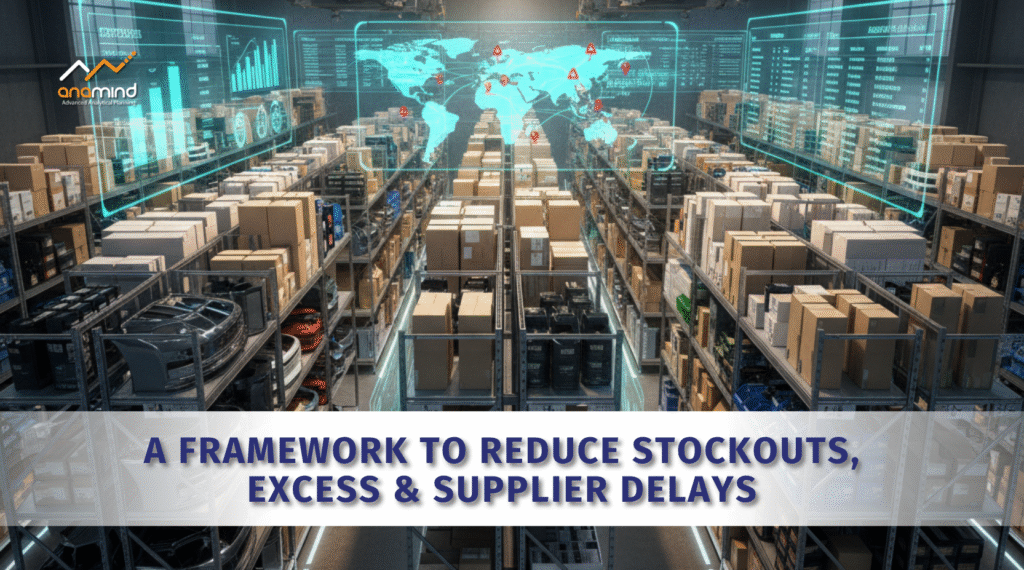When the US announced potential tariffs on imported drugs, the tremors were felt across India’s pharma ecosystem. The headlines screamed “US Tariff Threats Push Indian Pharma to Diversify Beyond Generics,” and beneath that lay a deeper warning — our pharma supply chains are dangerously exposed.
For years, the Indian pharmaceutical sector has been the world’s generic powerhouse. Nearly 90% of chronic care drugs in the US — from amlodipine to gabapentin — come from Indian manufacturers. But the same success has created a single-point dependency. One trade policy, one disruption, and the ripple hits every plant, every warehouse, every hospital shelf.
🧩 The Hidden Weak Links in Pharma Supply Chains
Let’s be honest: pharma isn’t struggling because it can’t manufacture — it’s struggling because it can’t plan.
- Long lead times create a lag between demand and response.
- Strict regulations add layers of approval before every shipment.
- Cold-chain logistics amplify risk — one temperature slip, and you lose millions in product.
- Forecasting blind spots make it impossible to match production to real market needs.
- And finally, expiry management — the silent killer of profitability.
Every expired batch is not just lost revenue; it’s a planning failure.
🌍 The Tariff Wake-up Call
When the US administration threatened 100% tariffs on imported pharma products, Indian companies realized something: the problem wasn’t tariffs — it was overdependence.
Indian pharma firms like Sun Pharma and Dr. Reddy’s wield enormous influence in the global generic market, but 40–45% of exports go to the US. That’s too much exposure for a sector that runs on tight regulatory margins and complex supply chains.
So, diversification became the buzzword — Latin America, Africa, Eastern Europe — all new markets. But here’s the catch: entering new markets with the same old planning systems won’t work.
Without strong forecasting intelligence, inventory optimization, and integrated supply planning, diversification is just shifting risk — not reducing it.
🧠 Why Smarter Planning is the New Competitive Advantage
Traditional ERP systems tell you what happened.
Smarter Planning systems tell you what will happen — and what to do about it.
Pharma companies today need planning platforms that can:
- Sense demand volatility in real time.
- Factor in expiry-driven production constraints.
- Simulate “what-if” tariff or regulatory scenarios.
- Optimize cold-chain logistics across temperature zones.
- Enable better collaboration between R&D, manufacturing, and distribution.
This is where Planning Intelligence changes the game.
💡 From Forecasting to Foresight
Forecasting accuracy in pharma isn’t just about algorithms; it’s about context. A sudden tender in Africa, a flu outbreak in China, or a trade policy change in the US can throw off even the best statistical models — unless you build scenario-based forecasting.
That’s exactly where Anamind’s consulting approach comes in — integrating domain expertise, data modeling, and planning tools that adapt as fast as the market does.
Because in pharma, reactive planning is expensive, but proactive planning is powerful.
🚀 The Way Forward for Pharma Supply Chain Leaders
The next decade of pharma competitiveness won’t be driven by who manufactures faster — but by who plans smarter.
Companies that modernize their planning today will be the ones to withstand future disruptions — whether tariffs, pandemics, or raw material shortages.
If your supply chain is running on spreadsheets or siloed systems, it’s time to take a hard look at how ready you are for the next shock.
📞 Ready to Build a Resilient Pharma Supply Chain?
Discover how Anamind’s Planning Intelligence framework helps pharma leaders improve forecasting accuracy, reduce expiries, and optimize end-to-end planning.





